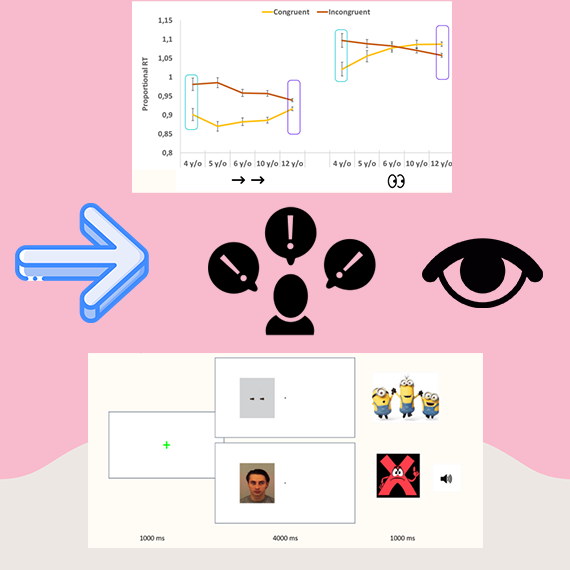
From an early age, gaze acts as a special cue to infer the interests, behaviors, thoughts and emotions of others. Despite sharing attentional properties with other non-social directional stimuli, such as arrows, gaze produces unique effects.
This difference has been observed in adults with a spatial interference task, where participants respond to the direction of eyes or arrows, irrespective of whether or not they match the location of the eyes or arrows. While arrows produce a standard congruency effect, where the direction congruent with the location of the stimulus (e.g., an arrow pointing to the right presented to the right) is identified more quickly than the incongruent one, gaze produces a reversed congruency effect, where the incongruent direction (eyes presented to the right, but looking to the left, i.e., to the center) is identified more quickly than the congruent one.
Belén Aranda Martín, María Ángeles Ballesteros and Juan Lupiáñez, CIMCYC researchers, determined the emergence of these gaze-specific attentional mechanisms through a study with 214 Spanish children (aged 4 to 17 years) divided into 6 age groups. The different groups performed the spatial interference task.
The results showed that while the congruency effect of arrows does not change with age, the reversal effect of gaze emerges progressively. The 4-year-olds responded in the same way to gaze and arrows. However, from the age of 5 years, the effect of gaze gradually changed and a reversed congruency effect emerged similar to that found in the adult population at age 12.
Throughout infancy, gaze acquires unique attentional properties related to its social nature. Gaze not only guides attention in one direction, but also triggers processes of attentional selection of the object or event gazed upon. These specific characteristics of gaze would reach their peak in early adolescence, a period with remarkable social changes.
Understanding gaze-specific attentional mechanisms may be crucial for children with atypical socio-cognitive development, so it would be interesting to study the relationship of the reversed congruency effect with other socio-cognitive variables such as theory of mind or imitation.
Contact
-Belén Aranda Martín: @email
-María Ángeles Ballesteros: @email
-Juan Lupiáñez: @email
Full reference
Aranda‐Martín, B., Ballesteros‐Duperón, M. N., & Lupiáñez, J. (2022). What gaze adds to arrows: Changes in attentional response to gaze versus arrows in childhood and adolescence. British Journal of Psychology. https://doi.org/10.1111/bjop.12552

